Physical Address
304 North Cardinal St.
Dorchester Center, MA 02124
Physical Address
304 North Cardinal St.
Dorchester Center, MA 02124

It’s been a while since I’ve tested SSD heatsinks, but recently I saw the iHTP m.2 2280 NVMe cooler in action Amazon For just $6.99, it looked rather impressive at first glance – so I immediately bought it to test.
Now who is iHTP? This is a good question. There is not a lot of information about the company that can be found online, and looking at the NewEgg store, it appears that the company Selling rebranded DeepCool products under its name. This is surprising to say the least, as it would likely be in violation of US sanctions – which it would not be This is the first time a retailer has tried to sell new branded DeepCool products.
While some of their other products may be questionable, I’m glad I bought iHTP’s SSD heatsink – because looks aren’t deceiving – it’s one of the best SSD heatsinks I’ve ever tested!
For this heatsink review, I did things a little differently than before. Thermal testing was performed with both air and liquid coolers, and I ran two sets of tests on each system. Let’s take a quick look at the unit’s specifications and features, then we’ll take a look at some of the thermal results.
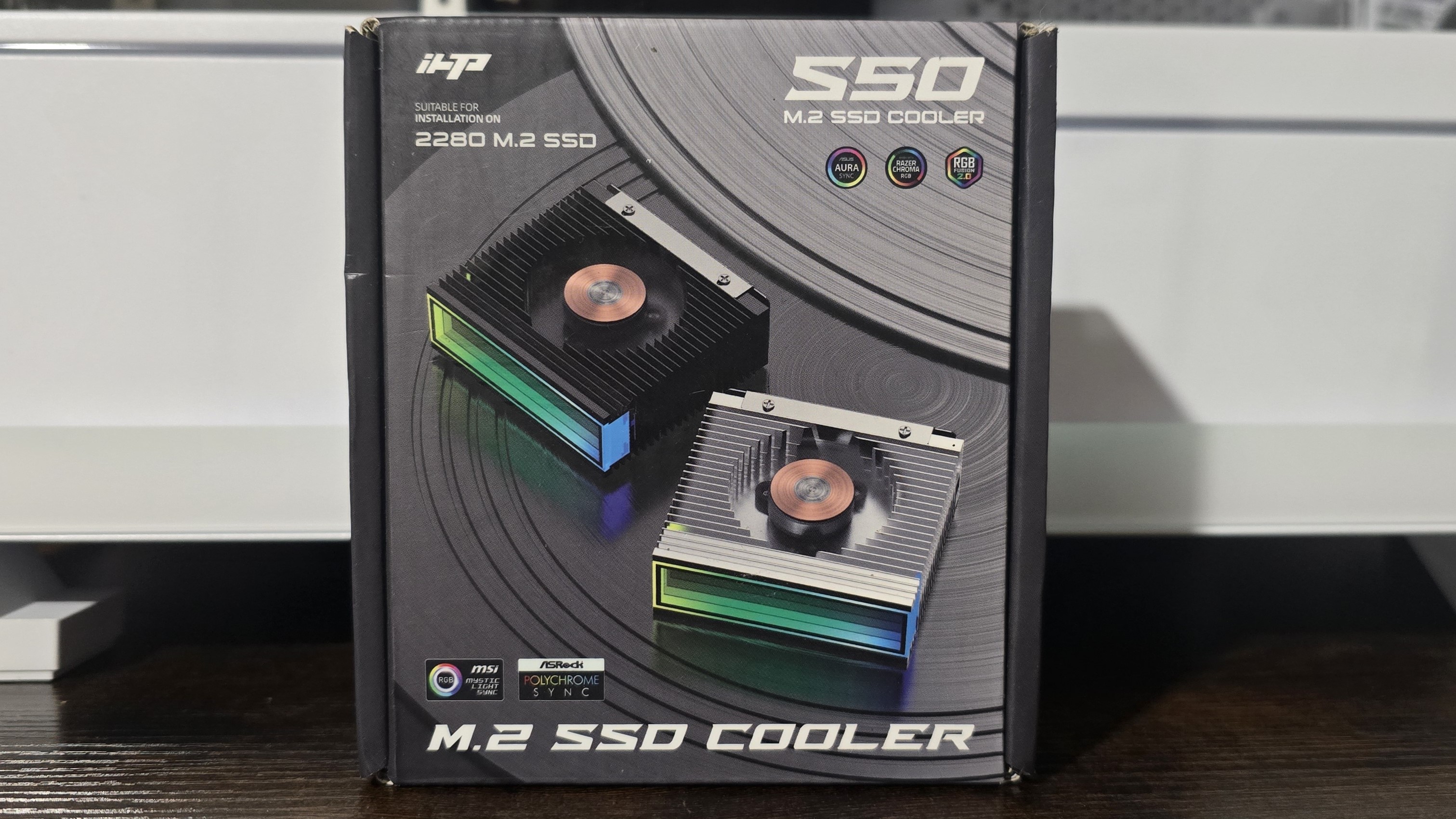
| Cooler | iHTP M.2 SSD cooler |
| Management systems renewal project | US$6.99 |
| Radiator material | Aluminum |
| Fan speed | Up to 4000 rpm |
| lighting | ARGB on fans |
| a guarantee | Unknown, but at $6.99 who cares? |
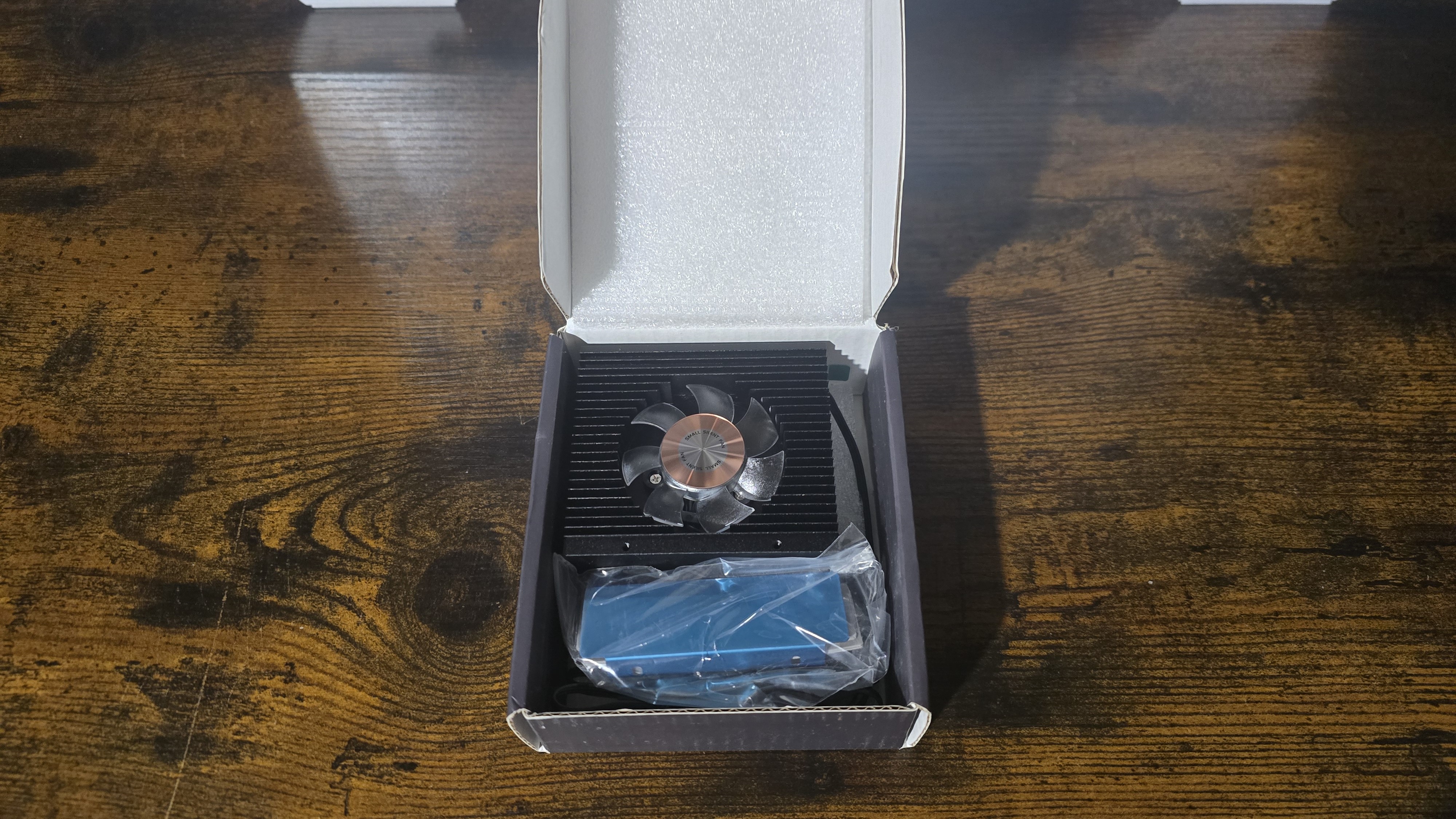
Packaging is fairly simple, as the cooler arrives in a small box large enough to contain the product. The box includes the heatsink, fan, base, two heat pads and necessary screws.
Tall but slim design with built-in fan
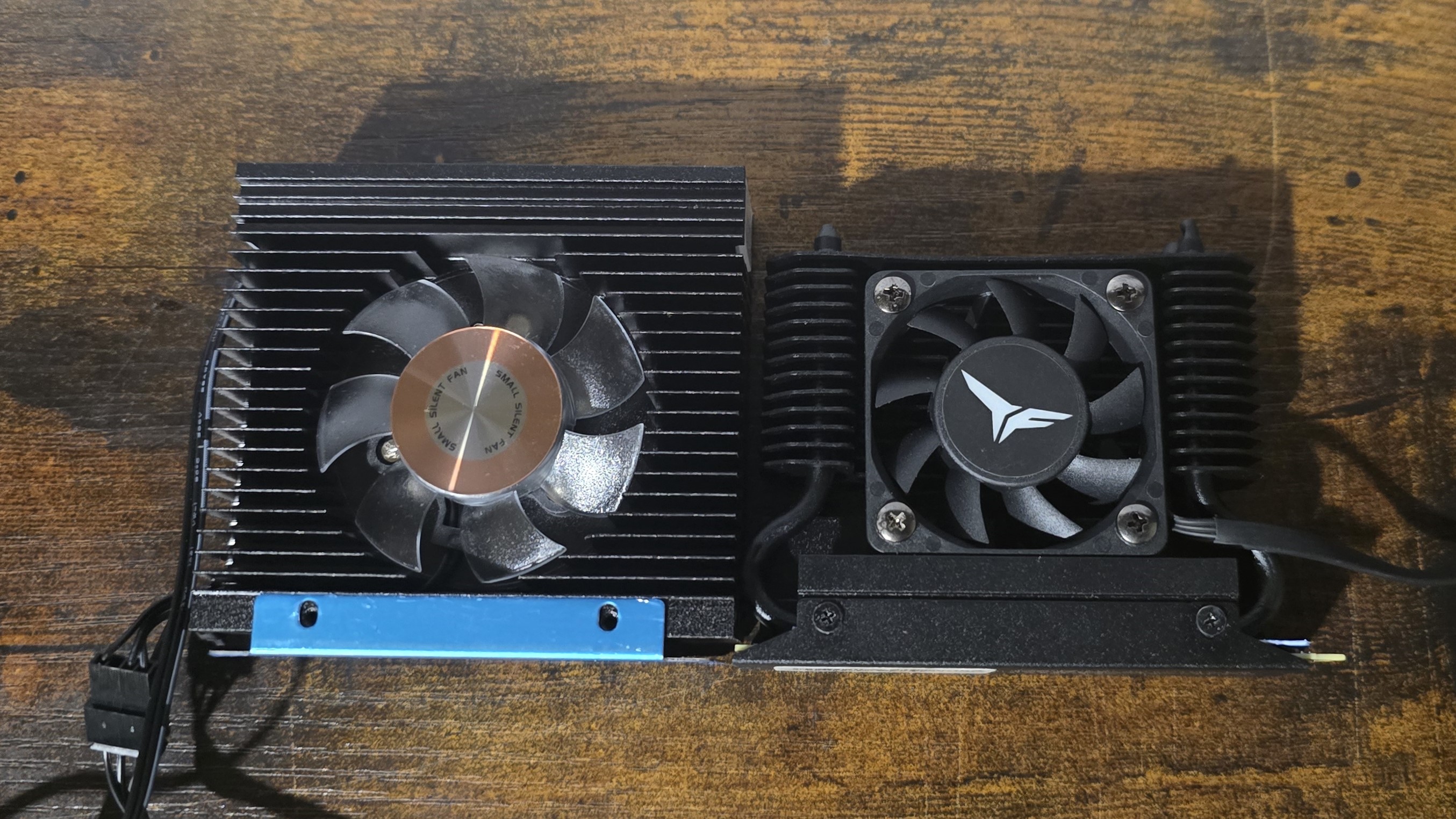
iHTP’s SSD heatsink features a long but thin design with a fan built into the heatsink. This can be useful for tight environments that have a lot of heat — for example, if your SSD is next to a GPU. To give an idea of its size, the image above shows the iHTP heatsink (left) next to TeamGroup’s Dark Airflow I (right).
Wide compatibility with air coolers
Some of the most powerful SSD coolers on the market are not compatible with air coolers due to their size. Although I cannot guarantee iHTP’s compatibility with all This air cooler on the market will fit well into many settings. To get today’s results with air cooling, I paired this SSD heatsink with Scythe’s Mugen 6. Although the spacing is tight in this setup, it fit without issue.
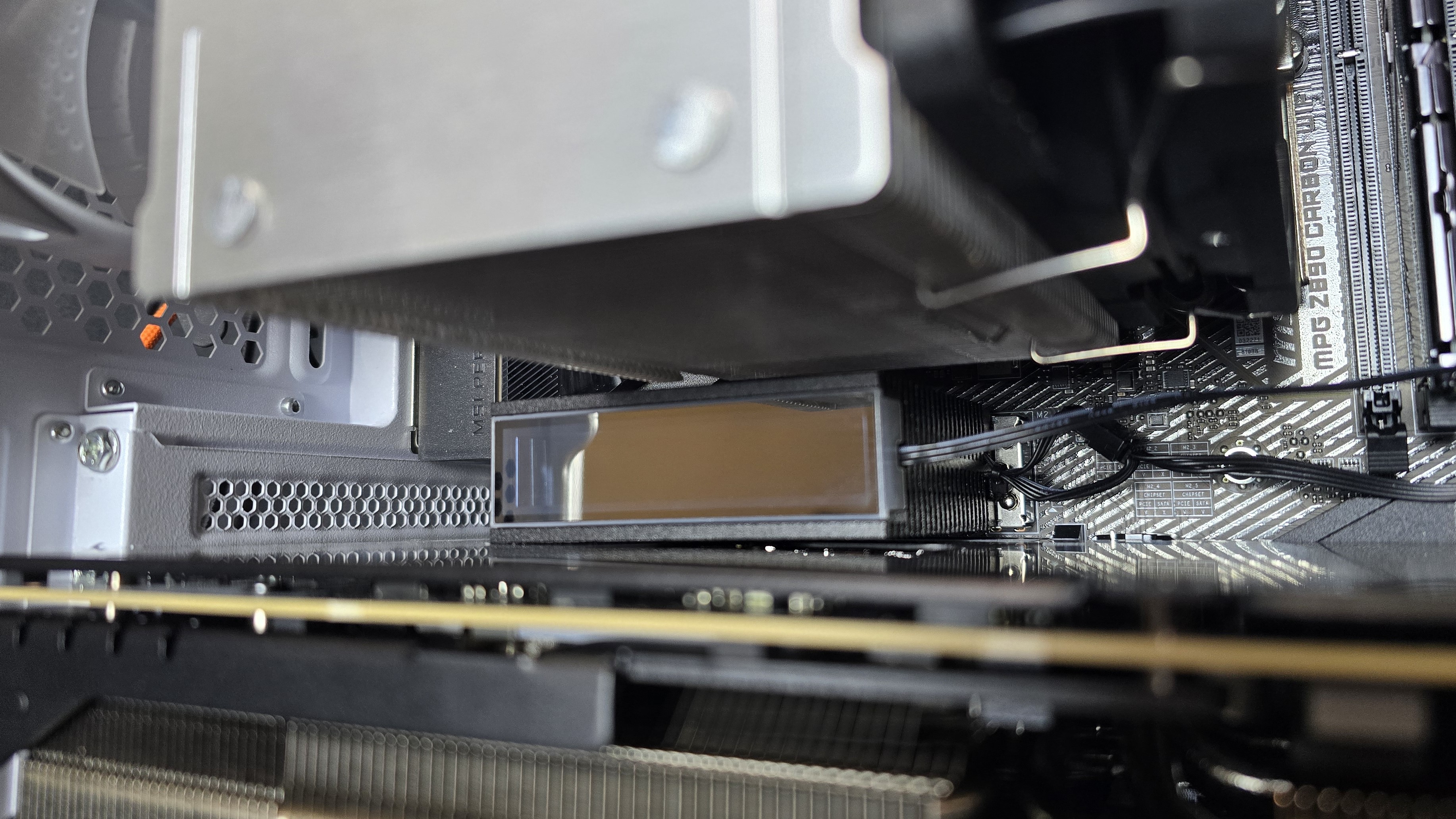
aRGB lighting with Infinity Mirror
Although I don’t see the need to shine up a product like this, some of you all would love to have lighting. If this sounds like you, you’ll be happy to know that the cooler features optional ARGB lighting and an infinity mirror design.
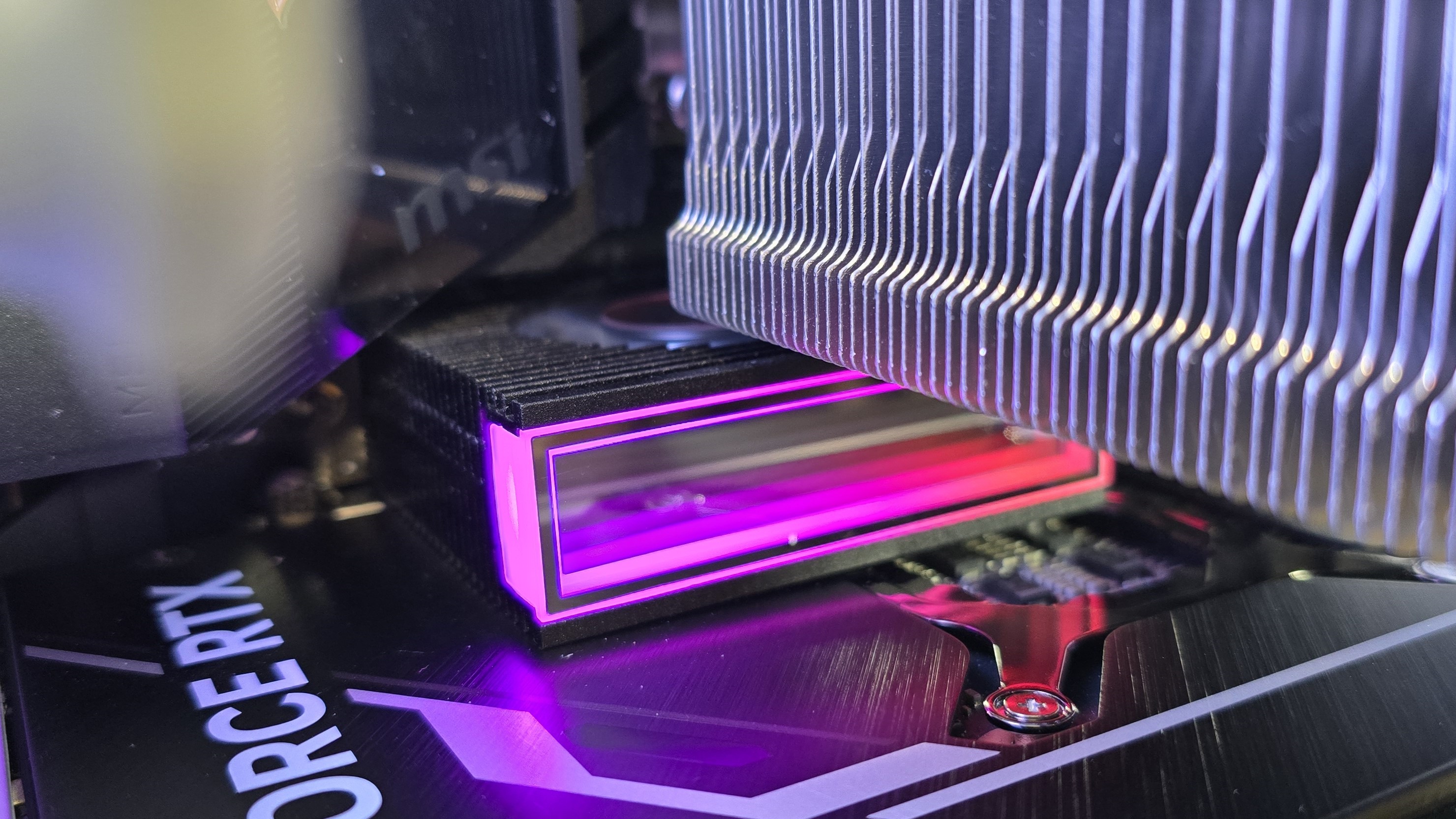
When I first started testing heatsinks, I used an i7-13700K system that was limited to PCIe 4.0 in an attempt to try and explain how these types of products can be useful even if you’re not using a PCIe 5.0 SSD.
With today’s review, we’re moving to a PCIe 5.0 platform with an Intel “Arrow Lake” Core Ultra 7 265K processor – and that’s Standards It will be a little more in-depth than previous reviews. To start, tests are conducted with air and liquid coolers to see how this affects performance. Additionally, in addition to the standard stress test, I implemented another stress test that runs simultaneously with the GPU stress test – to see how well the cooler performs when there are multiple sources of heat in the case to combat.
Installing an SSD cooler is simple, and if you’ve seen one you’ve basically seen them all – there is very little variation in the installation procedures due to the similarities between these units.
1. Take the base of the unit and apply the first thermal pad.
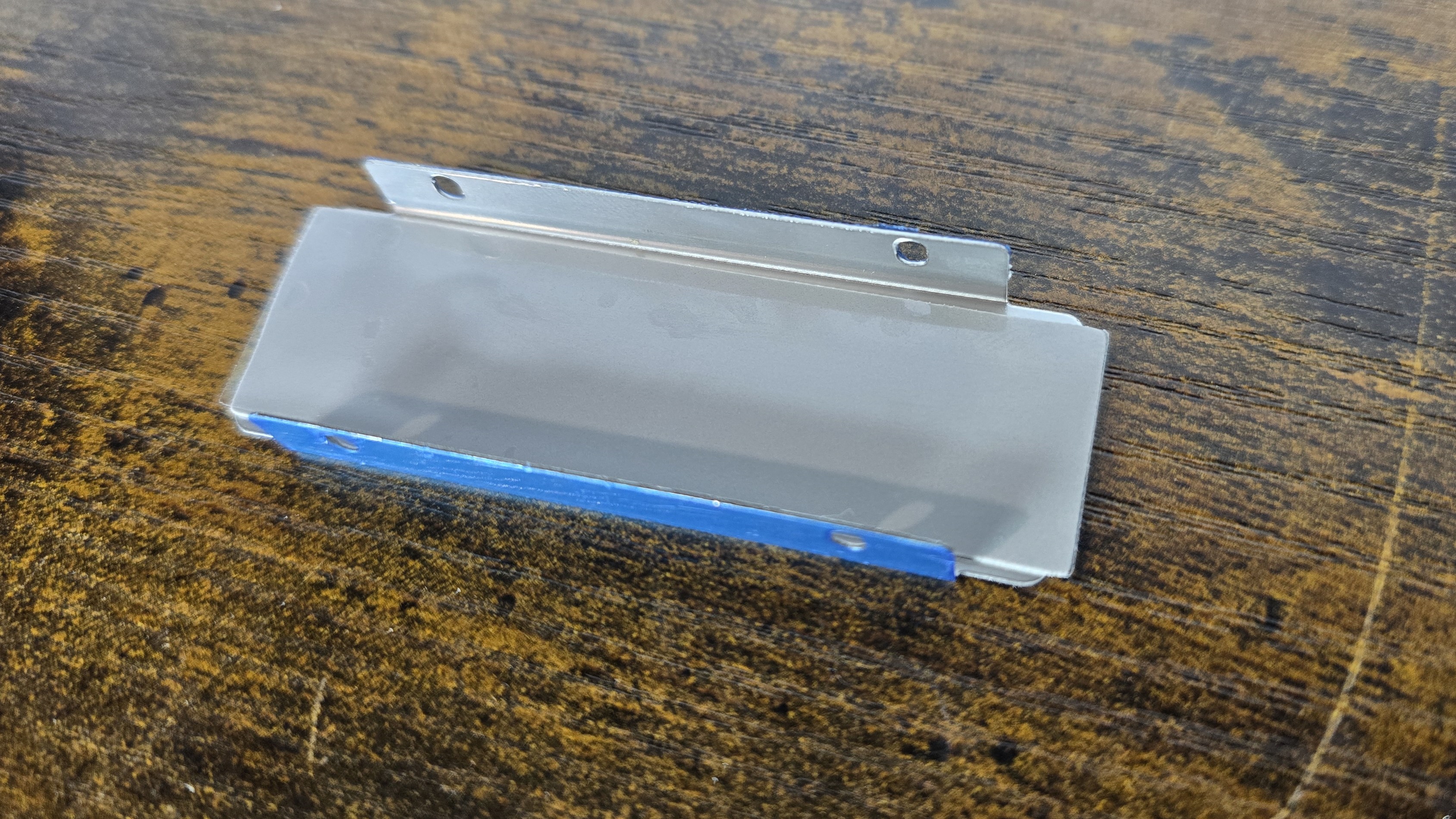
2. Place your SSD on top of the first thermal plate, then place the second thermal plate on top of it.
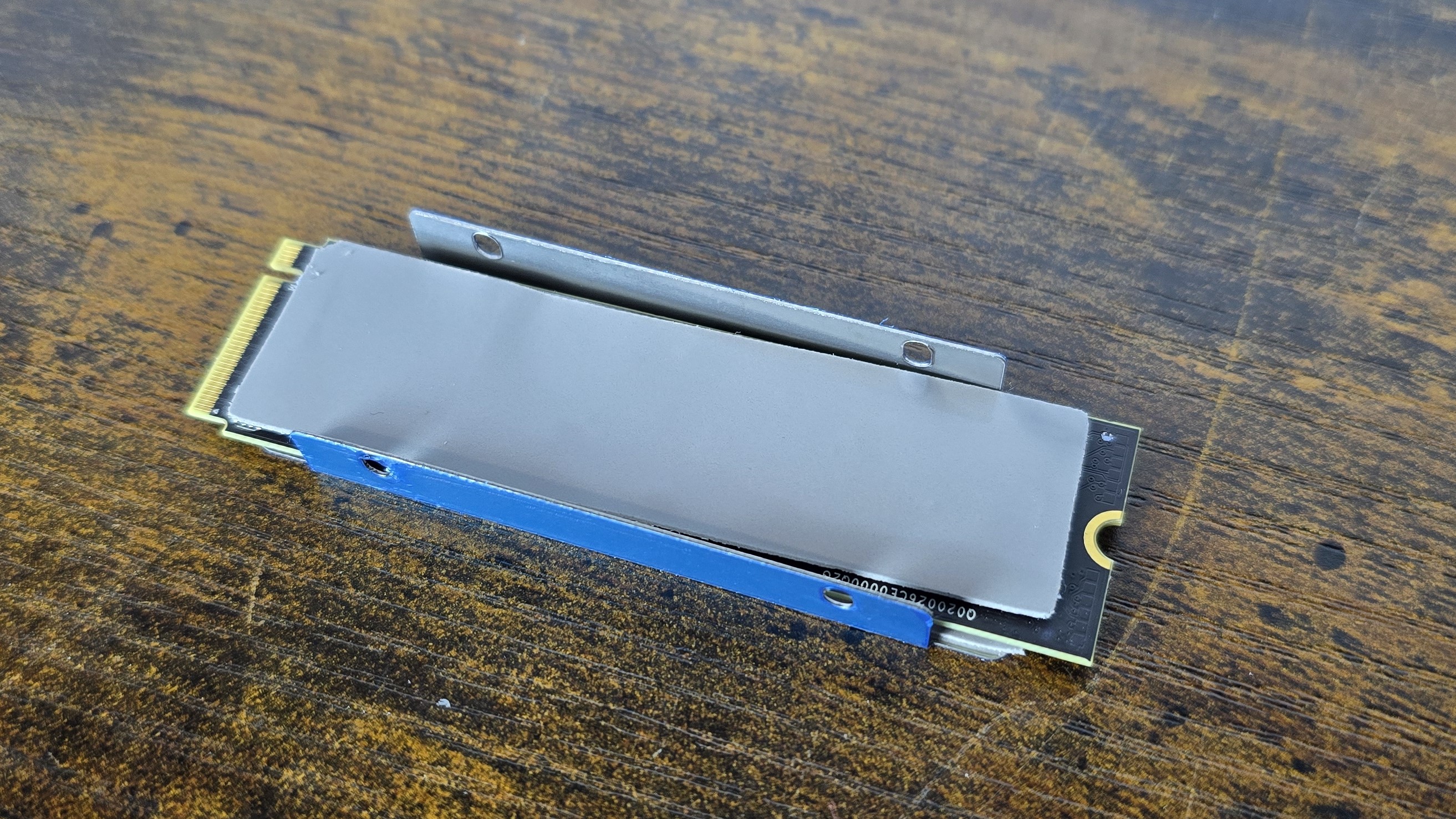
3. Place the heatsink over the top thermal plate, then secure it with the included screws.
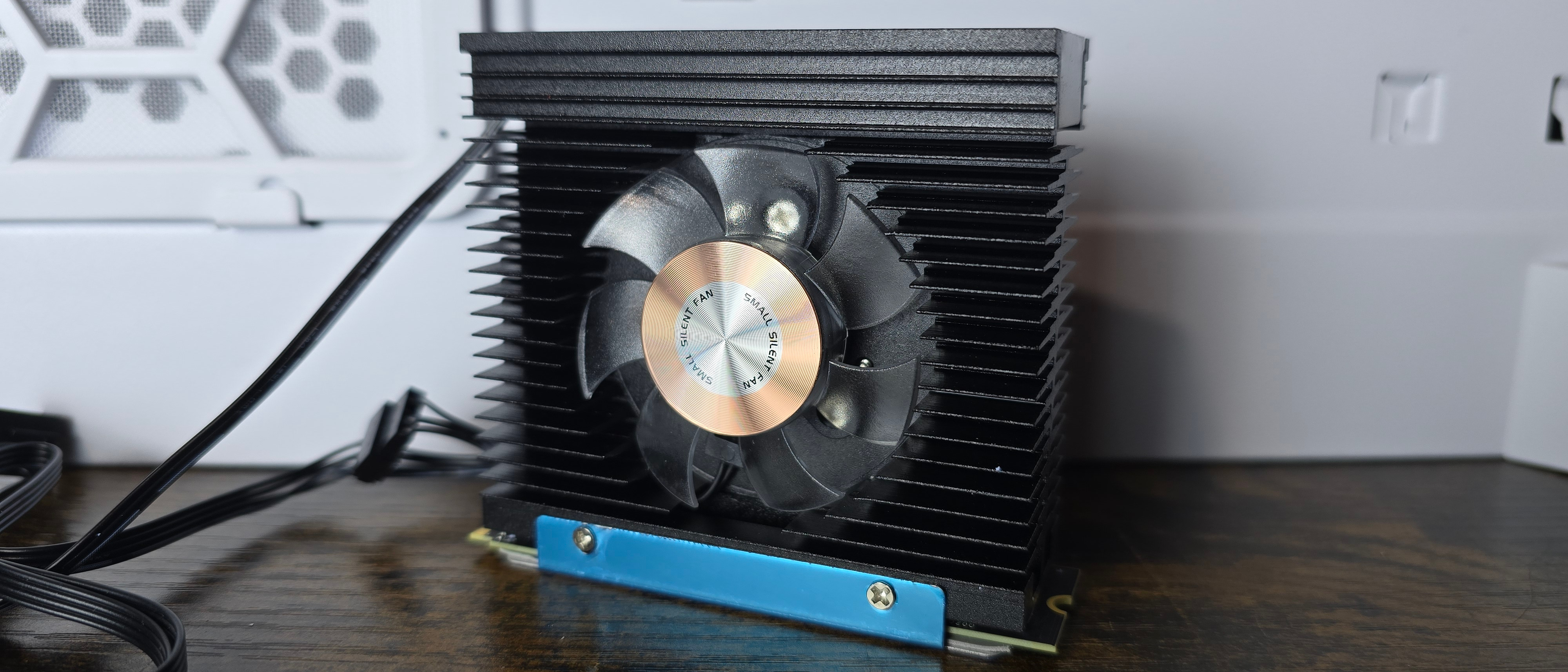
4. Finally, place the module into the M.2 slot on the motherboard and connect the ARGB and PWM cables. I’ve installed it in the slot between the GPU and CPU cooler here, but you may need to use another slot if you have a particularly wide air cooler.
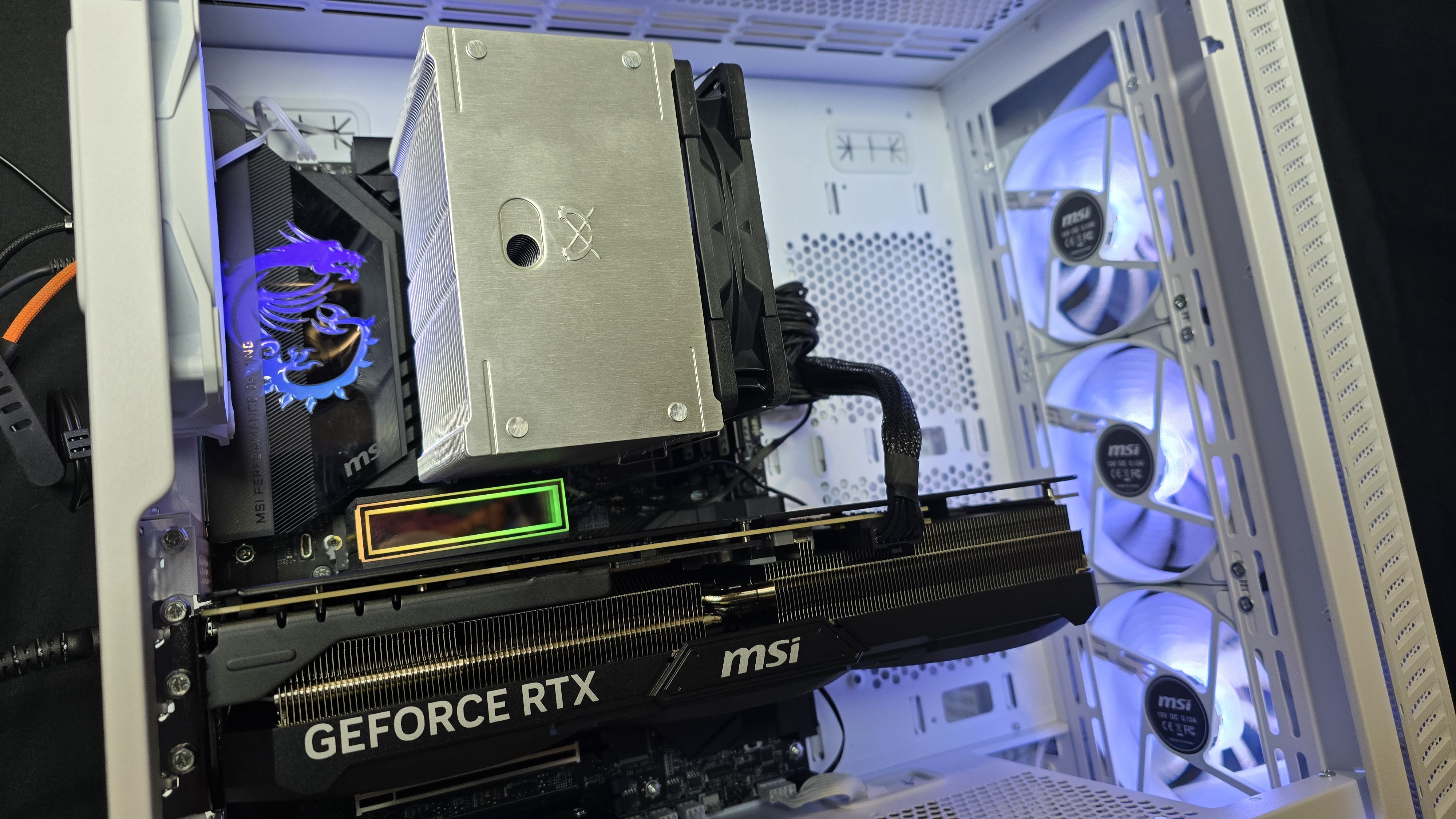
When I first started publishing SSD heatsink reviews, I limited my testing to a system that included an AIO liquid cooler. This type of testing was useful, but it didn’t quite tell the whole story – because many users would opt for air cooling instead. The first round of results here were measured while cooling the CPU using Scythe’s Mugen 6 air cooler.
Now, this review doesn’t have as many comparative scores as previous reviews, but I have included the best heatsink I have previously tested – Dark Airflow for TeamGroup I -And a few heatsinks that are not as powerful. The heatsinks I tested the iHTP on were carefully selected, and I think this review will contain enough information to cover everything you need to know about the iHTP’s NVMe SSD cooler.
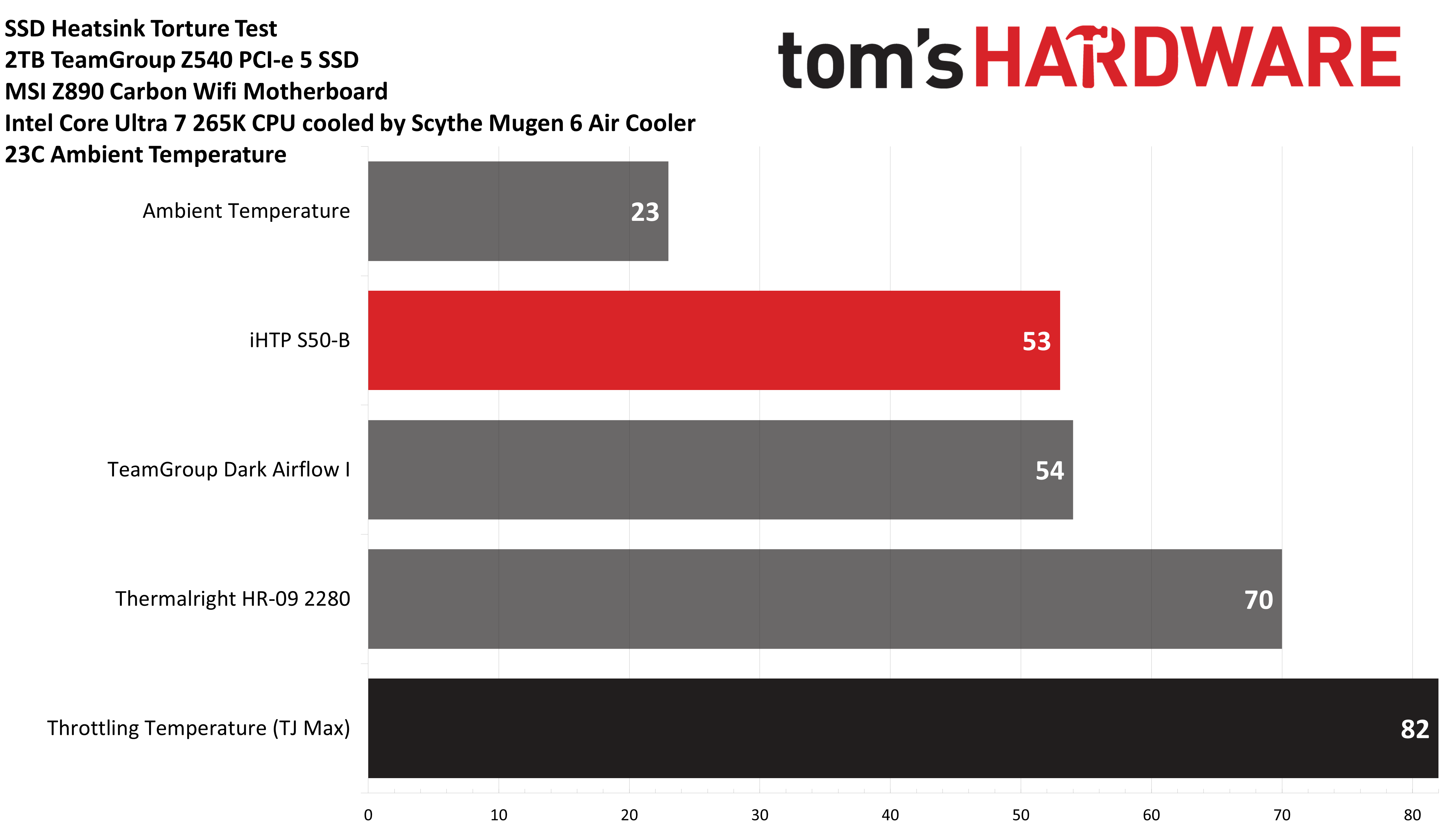
This first thermal test is performed while running a custom IOMeter script designed to stress both the NAND and SSD Vison E26 control unit. iHTP’s heatsink solution was surprisingly powerful despite its budget price of just $6.99, taking the crown from TeamGroup for the most powerful SSD heatsink I’ve tested in terms of performance.
But honestly, such devices would be very useful in environments with high thermal density, such as servers. So, to make the test even more difficult, I ran a second stress test on the SSD while also running a stress test on my GPU, which adds an additional 290W of heat to the system.
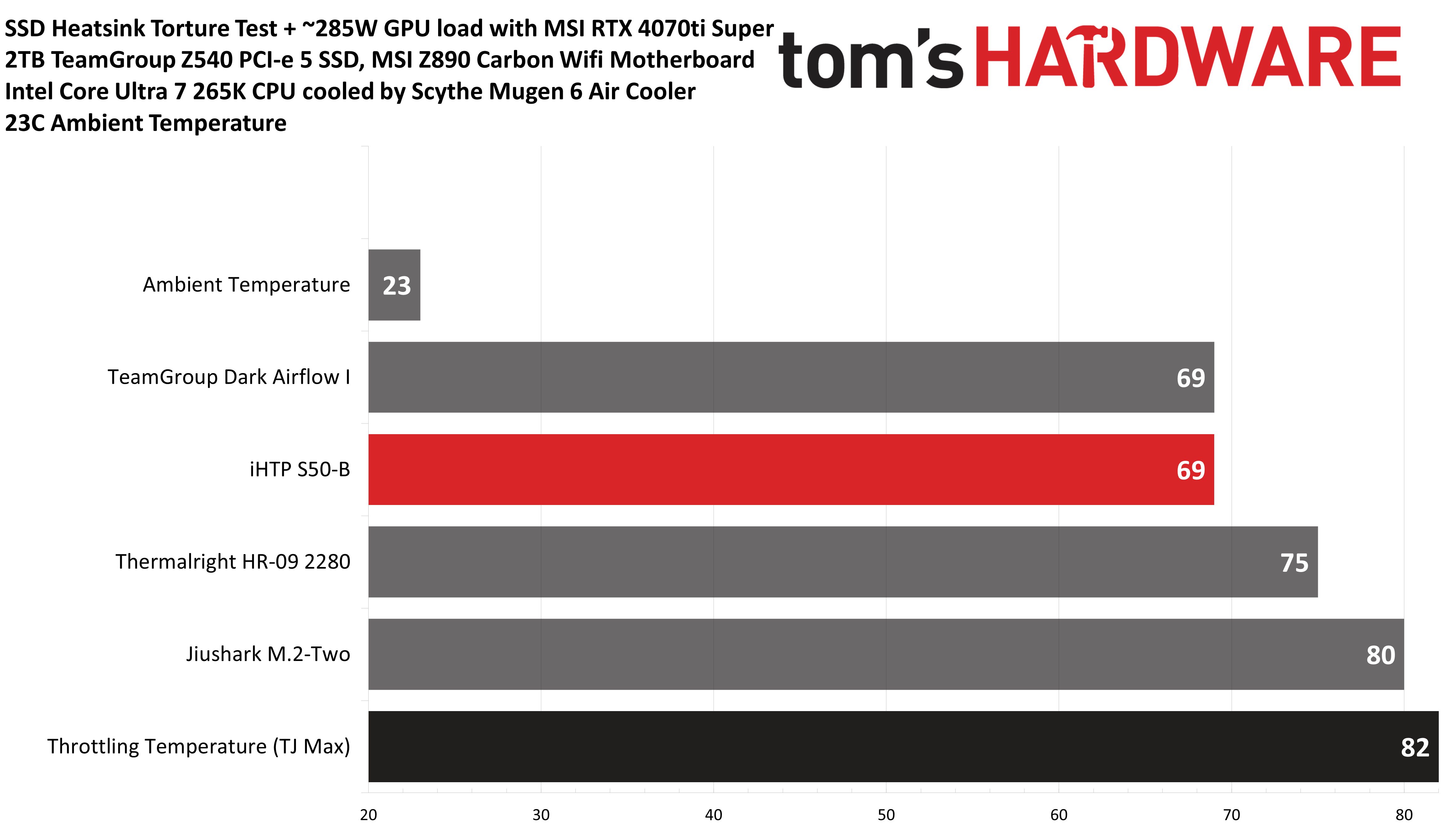
In this most intense scenario, temperatures rise by 16 degrees Celsius. The iHTP cooler doesn’t outperform TeamGroup’s Dark Airflow I on this tougher test, but it shares the crown for the best performance of any SSD heatsink I’ve tested!
I used to test these heatsinks with a liquid cooler Trex Panorama 240 AIO. The tests performed are the same as above, the only difference is that an AIO device is used instead of an air cooler.
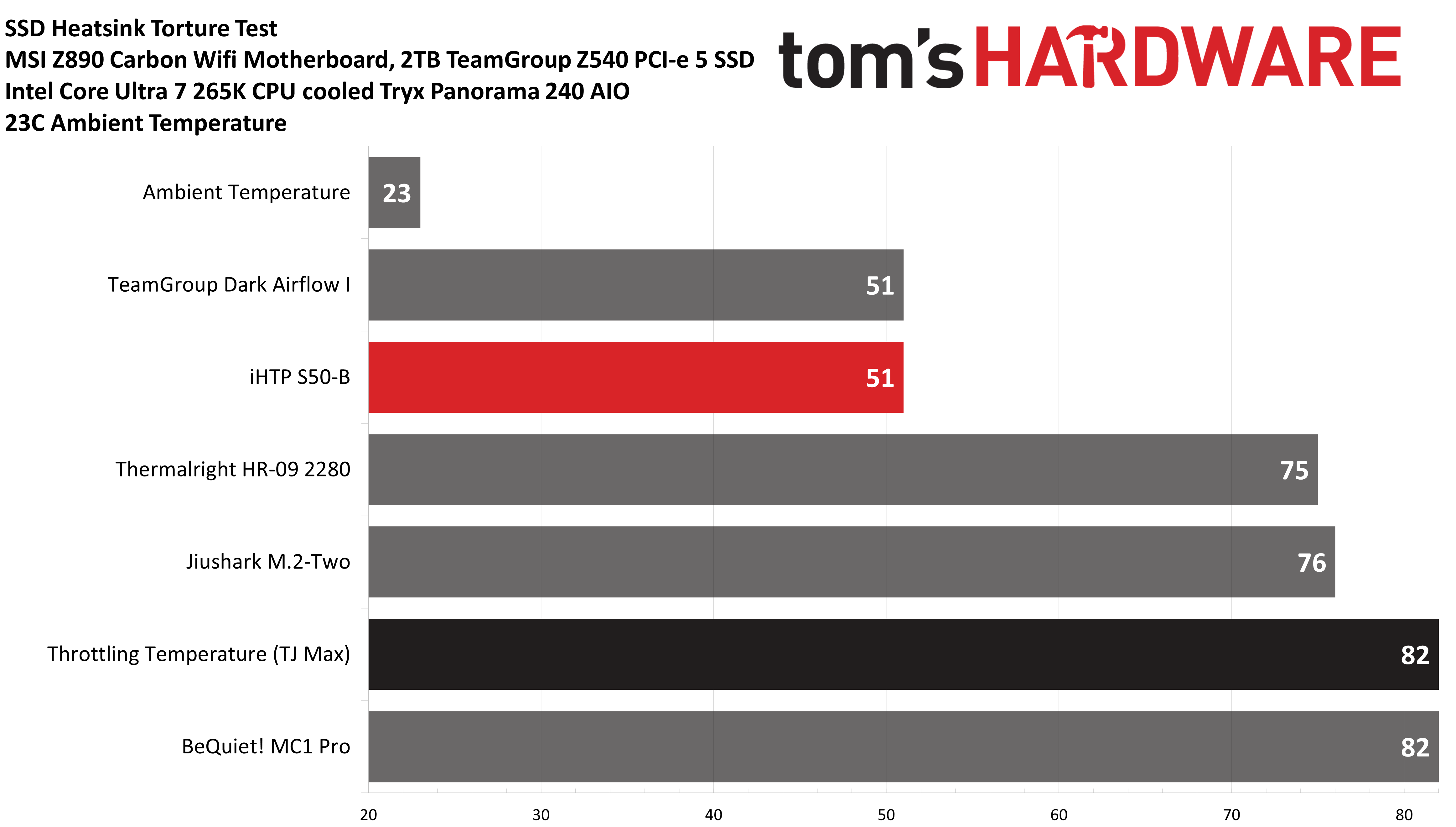
Using an AIO to cool the CPU, the S50-B from iHTP shares the crown with TeamGroup’s Dark Airflow I in this SSD stress test. For $6.99, this is an especially impressive result considering the TeamGroup cooler was $35 when we tested it (and is currently hard to find in stock).
How does it perform when increasing the thermal difficulty by also running stress testing on the GPU to simulate a server-like environment with multiple heat sources?
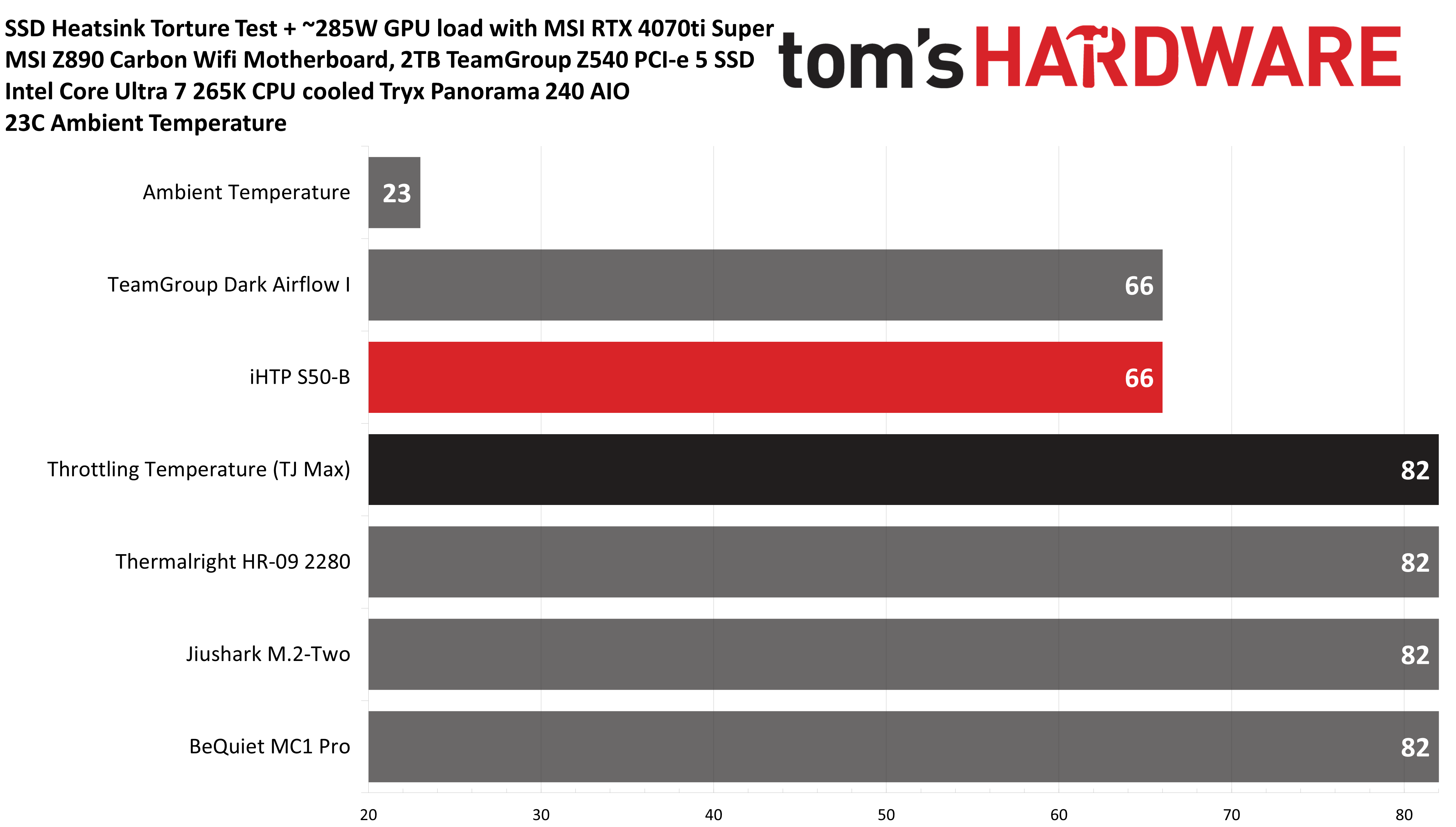
The iHTP cooler performs very well even when GPU heat is added to the equation – on par with TeamGroup’s Dark Airflow I, resulting in the best thermal results of any SSD heatsink I’ve tested.
The increased temperature with the GPU loaded on the liquid cooling setup is about the same as with air cooling for the iHTP and TeamGroup coolers, but with slightly lower temperatures – 66°C with the Tryx Panorama 240 AIO versus 69°C with Scythe’s Mugen 6.
It’s interesting to note that the weaker heatsinks from Thermalright and Jiushark are unable to prevent the SSD from throttling while paired with an AIO, while they were able to pass this test when configured with an air cooler due to the airflow this setup provides.
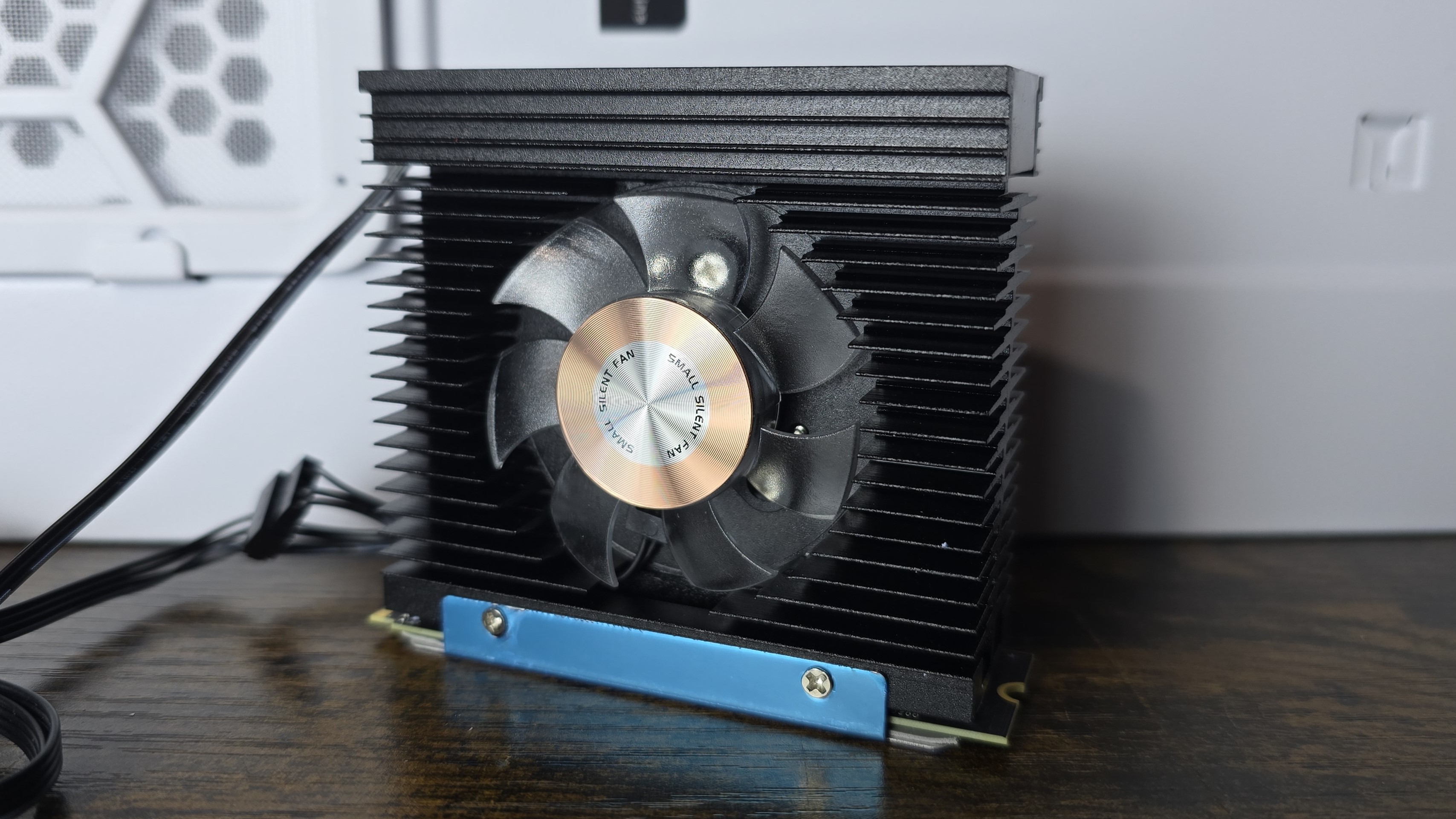
iHTP’s SSD heatsink delivers industry-leading thermal performance while delivering an extremely low price Only $6.99 on Amazon. If you’re looking for an SSD heatsink with a little extra flash and higher cooling performance, the iHTP Slim SSD Tower is what you’re looking for!